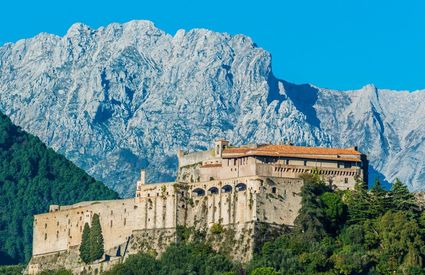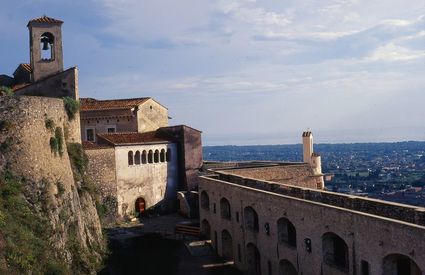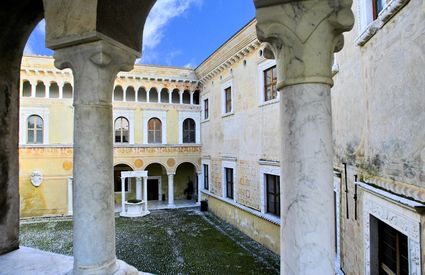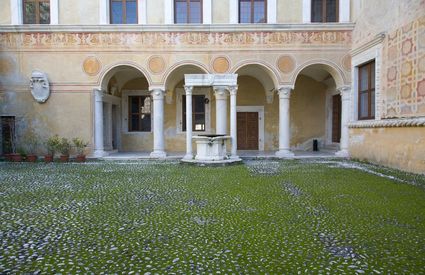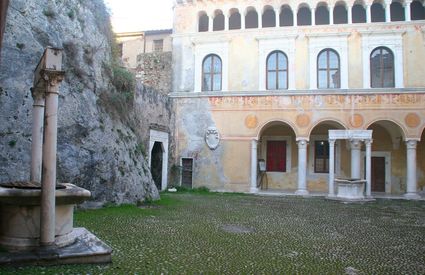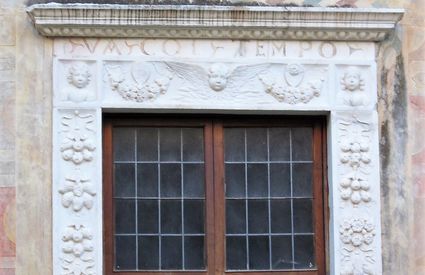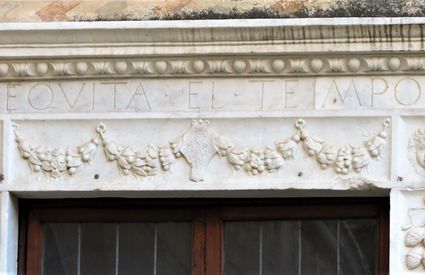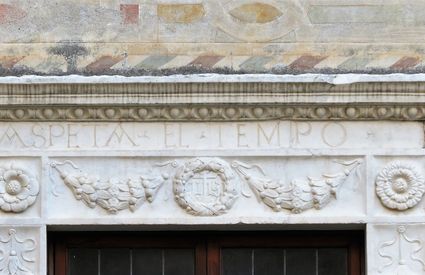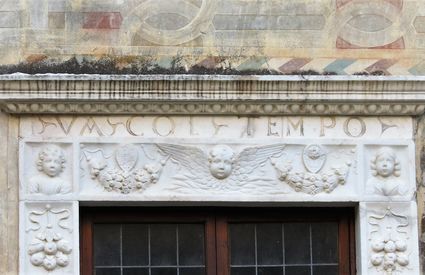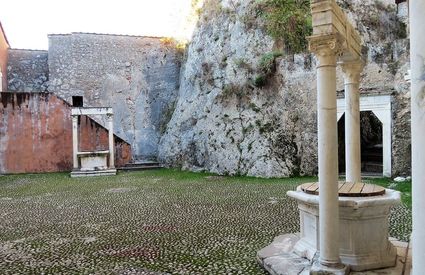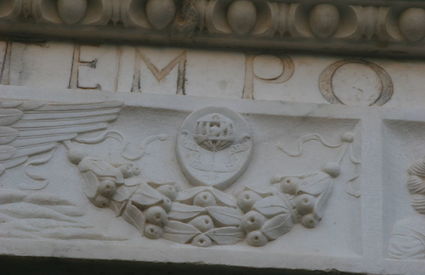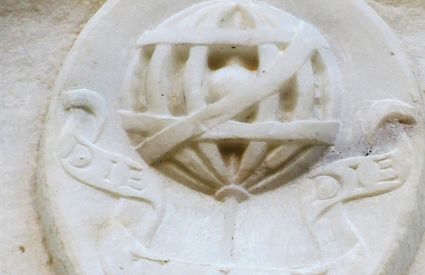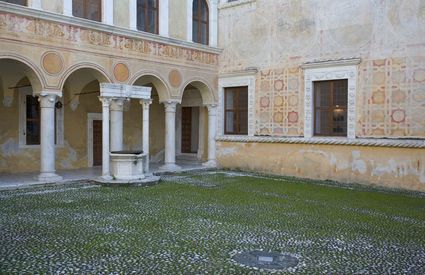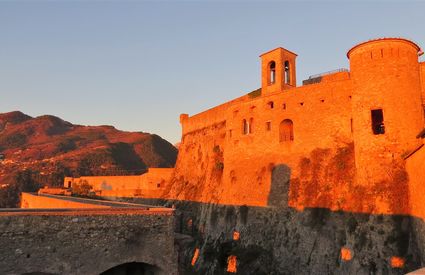Massa
Plato, Pico and sculpted time
Massa’s Castle in the suspended wonder of a hortus conclusus
Plato, Pico and sculpted time
Massa’s Castle in the suspended wonder of a hortus conclusus
The Renaissance courtyard: an elegant treasure trove
In the latter decades of the 15th century, the Marquis of Massa Iacopo Malaspina built, over time, a noble residence within the structure of a centuries-old medieval castle, set atop a hill. Ultimately he brought about a rich, visually evocative work teeming with architectural and aesthetic value.
From far away, the elegant beauty hidden within the fortress doesn’t quite shine through the imposing bastions towering over Massa: and every time visitors cross the threshold of the Renaissance courtyard, they’re greeted with a marvel-inspiring wonder.
It’s an alluring space, one modulated in the pure white marble of the nearby Apuan Alps, that pulls in the visitor. There’s a kind of comfortable contrast between the marble and the native rocks and heavy bastions, packed with wild herbs, all looming over the refined square, where two wells “converse” like troubadours touting ancient melodies.
A marble, time-themed secret garden
On the oldest facade of the Malaspina palace, which faces the ducal courtyard in the Massa castle (and contains a rare example of an exterior lighting system with Renaissance decoration), there are four engraved inscriptions with floral motifs along the narrow marble strip between the architraves and the window frames, resembling a continuous frieze. Uniting them is a unique theme, rhythmically written in the same manner as a sacred litany or a gospel sentence:
SEQUITA EL TEMPO, ASPETA EL TEMPO,
VA COL TEMPO,
COL TENPO
roughly translated as
FOLLOW TIME, WAIT FOR TIME, GO WITH TIME... OVER TIME
It would seem that the naturalistic themes of the decorations here are devoid of any semblance of the temporal dimension. There are no markers of Past-Present-Future, rendering it somewhat incomplete. And so this explicit reference to time was added: TIME (tempo) here is represented in the form of the fluctuating process of becoming, distilled into the “quintessence” of this space, itself a symbolic microcosm of the concept of time. Graphically, time is the title of this space, and at the same time, the signature element of the entire Renaissance architectural work.
These sculpted words in the Malaspina courtyard, in their own hushed way, are a reflection of the intensely speculative nature of the concept of temporal “becoming.” It’s a concept that so strongly envelops and conditions the reality of human existence, and it occupied an undoubtedly important space in philosophical studies of the time, just as it figured into the age’s angst-ridden poetry. Both show, in some ways, the height of modern anxiety.
Pico della Mirandola and a mysterious phrase
In those years, Giovanni Pico della Mirandola, having left behind his native Ferrara to come to the Medici court, had reached his cousin Taddea, wife of the Marquis of Massa, at this extraordinary castle. It was he who then dictated the beautiful, neo-Platonic-inspired epigraphs, enriching them with an even-more-secret and mysterious Latin phrase: DIE-TIT-DIE, a phrase that only expert and extra-curious eyes manage to read engraved in a small marble strip under a delicate armillary sphere.
A courtyard, a stone and herb garden, a private square, a hortus conclusus with only the most modest pretenses of being a monument. A metaphysical recess of the city, and its true heart, indifferent to that uncertain movement of that “time” imprisoned in the marble of its architraves. The mature fruit of a centuries-old artistic consciousness and culture.


